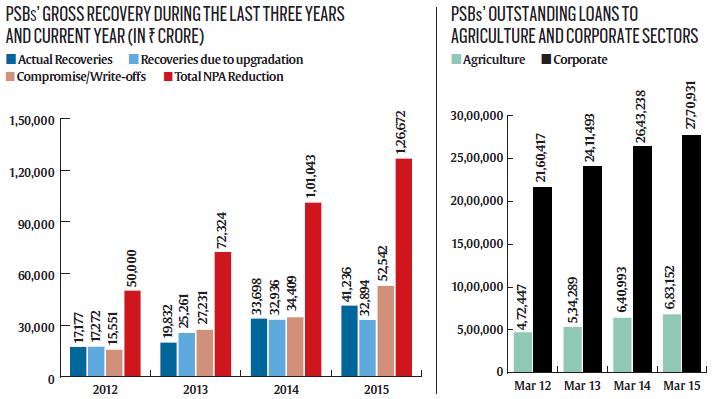I compliment the Finance Minister for achieving the fiscal deficit target of 3.9 per cent in the current year and fixing a target of 3.5 per cent for 2016-17. That one decision has lent a measure of credibility to the government’s professed commitment to the path of reform.
There are, however, questions about the fiscal math of the budget.
Let me go back to my column titled ‘Oil Windfall: Gone With the Wind’ (10 January 2016). The budget documents have confirmed the initial estimates. The government reaped a windfall of about Rs 1,40,000 crore due to the decline in crude oil prices. The bulk of the gain has been used in the following manner in 2015-16:
Gap in Direct Tax Receipts: Rs 46,000 crore
Gap in Other Receipts: Rs 44,000
Lower Borrowing due to Lower Nominal GDP: Rs 20,000
A missed opportunity
As I had feared, no part of the windfall has been used for additional capital expenditure or socially useful programmes. In fact, total capital expenditure has fallen from Rs 2,41,430 crore in the budget estimates to Rs 2,37,718 crore in the revised estimates.
It was a missed opportunity. If the government had collected its budgeted direct taxes and had achieved its disinvestment target, it could have used a substantial sum for additional capital expenditure. That would have given a big boost to aggregate demand. So, while the government met the fiscal deficit target of 3.9 per cent, it was achieved in an unsatisfactory manner — so, no high marks for fiscal management.
Let us now look at the fiscal deficit target of 3.5 per cent fixed for 2016-17.
Total receipts and total expenditure will be up from Rs 17,85,391 crore in 2015-16 (RE) to Rs 19,78,060 crore in 2016-17 (BE). That is a huge jump of Rs 1,92,669 crore. Of the total expenditure, Rs 5,33,904 crore will be financed by borrowing (the fiscal deficit) which is about the same level as the borrowing in 2015-16 (Rs 5,35,090 crore).
The fiscal math puzzle How does the government propose to garner additional resources of Rs 1,92,669 crore? This is where the math becomes a puzzle. From the budget documents, the following appear to be the main sources (the numbers have been rounded off):
Net Tax Revenue: +Rs 1,07,000 crore
Non Tax Revenue: + Rs 64,000
Other Receipts: + Rs 31,000
These are ambitious projections of increases in receipts. The assumptions are that direct tax receipts will grow by 12.6 per cent as against 8.3 per cent in 2015-16; spectrum auction will bring in an additional Rs 42,000 crore which will boost Non-Tax revenue; and isinvestment will yield an additional Rs 31,000 crore over the level achieved in 2015-16. If these assumptions must be proved to be correct, it will require extraordinary capacity and drive in the Department of Revenue and the Department of Disinvestment. It will also mean that the telecom service providers will be ready to stake more money for acquiring spectrum.
What is of concern is that, should the assumptions prove to be incorrect, there does not seem to be a Plan B. Will the government cut subsidies or other expenditure? There are already complaints of insufficient allocation to the social sector. Nor is there scope to cut defence expenditure. Perhaps, some payments may be staggered while implementing the Pay Commission report or the One Rank One Pension scheme — both beehives.
The other doubtful part of the fiscal math is the growth of GDP. In 2015-16, nominal GDP grew by 8.6 per cent. The assumption for 2016-17 is that nominal GDP will grow at 11 per cent. The revenue estimates (both tax and non-tax) are crucially dependent on GDP growth. We may keep our fingers crossed.
Off-budget borrowings
There is another aspect of the budget that affects the credibility of the fiscal math. These are estimates of borrowing by the Ministry of Railways and the Ministry of Road Transport. Such borrowings, called ‘extra budgetary resources (EBR)’, have been kept outside the balance sheet of the government. In the case of Railways, the EBR is projected to jump from Rs 48,700 crore in 2015-16 to Rs 59,325 crore in 2016-17 and in the case of Road Transport from Rs 28,000 crore in 2015-16 to Rs 59,279 crore in 2016-17. Apart from the capacity to borrow, the wisdom of such off-budget borrowing is open to question. The correct approach would be for the government to borrow and provide the funds to the two infrastructure ministries in the form of budgetary support. Borrowing large amounts by the two ministries (or their public sector arms) may be unexceptionable in terms of accounting but is not likely to go down favourably with the eagle-eyed analysts and rating agencies. I shall not be surprised if they will add these extra budgetary borrowings to the overall fiscal deficit!
The fiscal sum (3.5 per cent) is indeed the right answer, but the fiscal math is puzzling.
Website: pchidambaram.in

